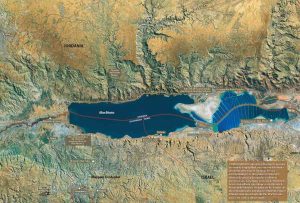Confira persepolis3D.com
Persepolis Reconstruction
The goal of this endeavour is to bring Persepolis back to life – not only to show the complexities of its urban design but also to illuminate the wealth of details to a wide spectrum of both professionals and interested laymen alike. The presented virtual reconstruction is based on the documentation obtained from the excavations led by E. Herzfeld, F. Krefter and E. F. Schmidt. Especially helpful to our project was the tremendous efforts of the architect, Friedrich Krefter, who in 1933 oversaw the excavations of this bygone empire and from 1963 to 1970 established a set of standards for Persepolis and therewith, a wealth of reconstruction drawings and two scale models of the great terraces the Achaemenid residential palace including its volumes, the great entrance vestibules and interiors are all standing once again before our eyes.
Our work has integrated with exactitude all existing and substantiated knowledge of Persepolis. Where personal interpretation was required, we have carefully weighed the suggestions of the archaeologists involved in the aforementioned excavations and have opted for what we believe to be the best solution from the various possibilities.
It is already possible through this virtual reconstruction to step back into the Persian Empire of the sixth century B.C. In the very near future a more advanced phase of this project will be realized. In that phase one will be able to once again visit the great terrace, the monumental buildings, the palatial residences, the public squares and the private gardens from every angle and perspective.
To digitally reconstruct these complex structures in their entirety including the vast richness of detail is an undertaking that will require a great deal of time to accomplish. The specific buildings can only gradually be created and the great terrace will be built step by step. What we at this point in time are presenting to you represents only the preliminary fruits of our labour and will be both qualitatively and quantitatively further developed – the results of which can be monitored through our updates on this website.
